
Fairport Convention are an English folk rock band, formed in 1967 by guitarists Richard Thompson and Simon Nicol, bassist Ashley Hutchings and drummer Shaun Frater. They started out influenced by American folk rock, with a set list dominated by Bob Dylan and Joni Mitchell songs and a sound that earned them the nickname "the British Jefferson Airplane". Vocalists Judy Dyble and Iain Matthews joined them before the recording of their self-titled debut in 1968; afterwards, Dyble was replaced by Sandy Denny, and Matthews later left during the recording of their third album.

BBC Radio 3 is a British national radio station owned and operated by the BBC. It replaced the BBC Third Programme in 1967 and broadcasts classical music and opera, with jazz, world music, drama, culture and the arts also featuring. The station has described itself as "the world's most significant commissioner of new music".
Simulcast is the broadcasting of programs or events across more than one resolution, bitrate or medium, or more than one service on the same medium, at exactly the same time. For example, Absolute Radio is simulcast on both AM and on satellite radio. Likewise, the BBC's Prom concerts were formerly simulcast on both BBC Radio 3 and BBC Television. Another application is the transmission of the original-language soundtrack of movies or TV series over local or Internet radio, with the television broadcast having been dubbed into a local language.

The Queen's Hall was a concert hall in Langham Place, London, opened in 1893. Designed by the architect Thomas Knightley, it had room for an audience of about 2,500 people. It became London's principal concert venue. From 1895 until 1941, it was the home of the promenade concerts founded by Robert Newman together with Henry Wood. The hall had drab decor and cramped seating but superb acoustics. It became known as the "musical centre of the [British] Empire", and several of the leading musicians and composers of the late 19th and early 20th centuries performed there, including Claude Debussy, Edward Elgar, Maurice Ravel and Richard Strauss.
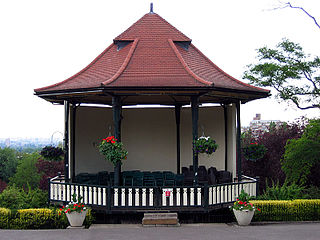
A bandstand is a circular, semicircular or polygonal structure set in a park, garden, pier, or indoor space, designed to accommodate musical bands performing concerts. A simple construction, it both creates an ornamental focal point and also serves acoustic requirements while providing shelter for the changeable weather, if outdoors. In form bandstands resemble ornamental European garden gazebos modeled on outdoor open-sided pavilions found in Asian countries from early times.
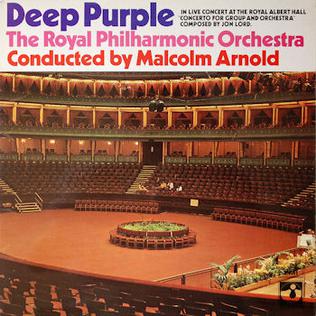
Concerto for Group and Orchestra is a live album by Deep Purple and the Royal Philharmonic Orchestra conducted by Malcolm Arnold, recorded at the Royal Albert Hall, London, in September 1969. It consists of a concerto composed by Jon Lord, with lyrics written by Ian Gillan. This is the first full length album to feature Ian Gillan on vocals and Roger Glover on bass. It was released on vinyl in December 1969. The original performance included three additional Deep Purple songs, "Hush", "Wring That Neck", and "Child in Time"; these were included on a 2002 release. This was the last Deep Purple album distributed in the US by Tetragrammaton Records, which went defunct shortly after.

Eastbourne Redoubt is a circular coastal defence fort at Eastbourne, East Sussex, on the south coast of England. It was built in 1805 as part of the British anti-invasion preparations during the Napoleonic Wars. The building is now owned by the local authority and is open to the public.

The Criterion Theatre is a West End theatre at Piccadilly Circus in the City of Westminster, and is a Grade II* listed building. It has a seating capacity of 588.

The De La Warr Pavilion is a grade I listed building, located on the seafront at Bexhill-on-Sea, East Sussex, on the south coast of England.
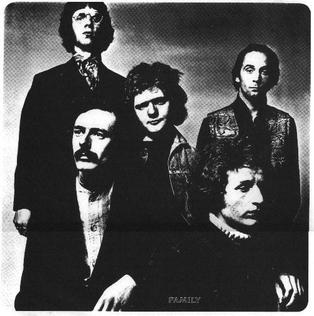
Family were an English rock band, active from late 1966 to October 1973, and again since 2013 for a series of live shows. Their style has been characterised as progressive rock, as their sound often explored other genres, incorporating elements of styles such as folk, psychedelia, acid rock, jazz fusion, and rock and roll. The band achieved recognition in the United Kingdom through their albums, club and concert tours, and appearances at festivals.
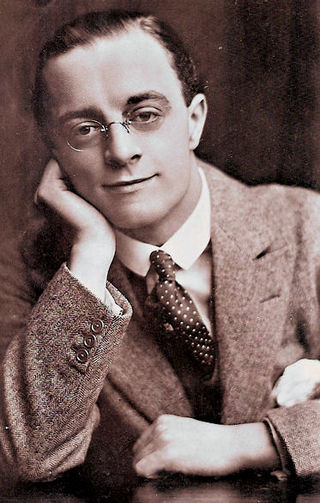
Leslie Lincoln Henson was an English comedian, actor, singer, producer for films and theatre, and film director. He initially worked in silent films and Edwardian musical comedy and became a popular music hall comedian who enjoyed a long stage career. He was famous for his bulging eyes, malleable face and raspy voice and helped to form the Entertainments National Service Association (ENSA) during the Second World War.
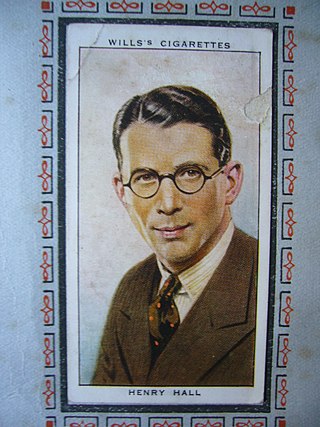
Henry Robert Hall, CBE was an English bandleader who performed regularly on BBC Radio during the British dance band era of the 1920s and 1930s, through to the 1960s.
Promenade concerts were musical performances in the 18th and 19th century pleasure gardens of London, where the audience would stroll about while listening to the music. The term derives from the French se promener, "to walk".
Performing arts – are art forms where the participant engages in a physical performance using their body, voice, language, or use of specific equipment for entertainment purposes.

PCGG was a radio station located at The Hague in the Netherlands, which began broadcasting a regular schedule of entertainment programmes on 6 November 1919. The station was established by engineer Hanso Idzerda, and is believed to have been Europe's first sustained broadcasting station, as well as one of the first stations in the world to transmit entertainment intended for a general audience.
Formally known as "The Marching Blues", The Hertfordshire Showband is based in Potters Bar, Hertfordshire and is one of the United Kingdom's most successful marching bands. The 75 strong band is administered by the Hertfordshire Band Academy. The Band is for both young people and adults and features Brass, Flute and Percussion sections. They meet for practices on Mondays at 8pm for senior band and 7pm for cadets at Mount Grace School Hall, Potters Bar.

Eastbourne is a town and seaside resort in East Sussex, on the south coast of England, 19 miles (31 km) east of Brighton and 54 miles (87 km) south of London. It is also a local government district with borough status. Eastbourne is immediately east of Beachy Head, the highest chalk sea cliff in Great Britain and part of the larger Eastbourne Downland Estate.
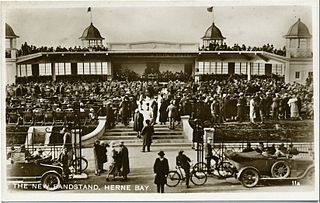
The Central Bandstand, known as the Bandstand, in Herne Bay, Kent, England, was designed by H. Kempton Dyson in 1924, extended with an art deco frontage in 1932, and refurbished between 1998 and 1999. It is one of the coastal landmarks of the town. When first built, it was a popular venue for visiting military band concerts and for tea dances. Edwina Mountbatten spoke there on behalf of the Red Cross in 1939. In the 1920s and 1930s a red carpet would be laid across the road and up to the stage for the conductor of the brass band to walk from the Connaught Hotel which was directly opposite the Bandstand.

The King's Hall is a theatre, concert hall and dance hall at Herne Bay, Kent, England. It was built as The Pavilion in 1903–1904, developed as the King Edward VII Memorial Hall in 1913 in memory of the late king, and was being called The King's Hall by 1912 while still at planning stage. Both building phases were designed by the local Council surveyor F.W.J. Palmer, CE. The year 2013 was the centenary of the completion of the second and final phase of this building and its grand opening by Princess Beatrice on 10 July 1913.

The Columbia Park Band Shell is located just across the railroad tracks from the Marshfield Central Avenue Historic District in Marshfield, Wisconsin. The band shell was built in 1931 as a local make-work project similar to those pursued by many rural Wisconsin communities during the Great Depression. Its weekly summer band concerts continue to provide a source of free, local entertainment. The band shell was added to the National Register of Historic Places in 2008.


















